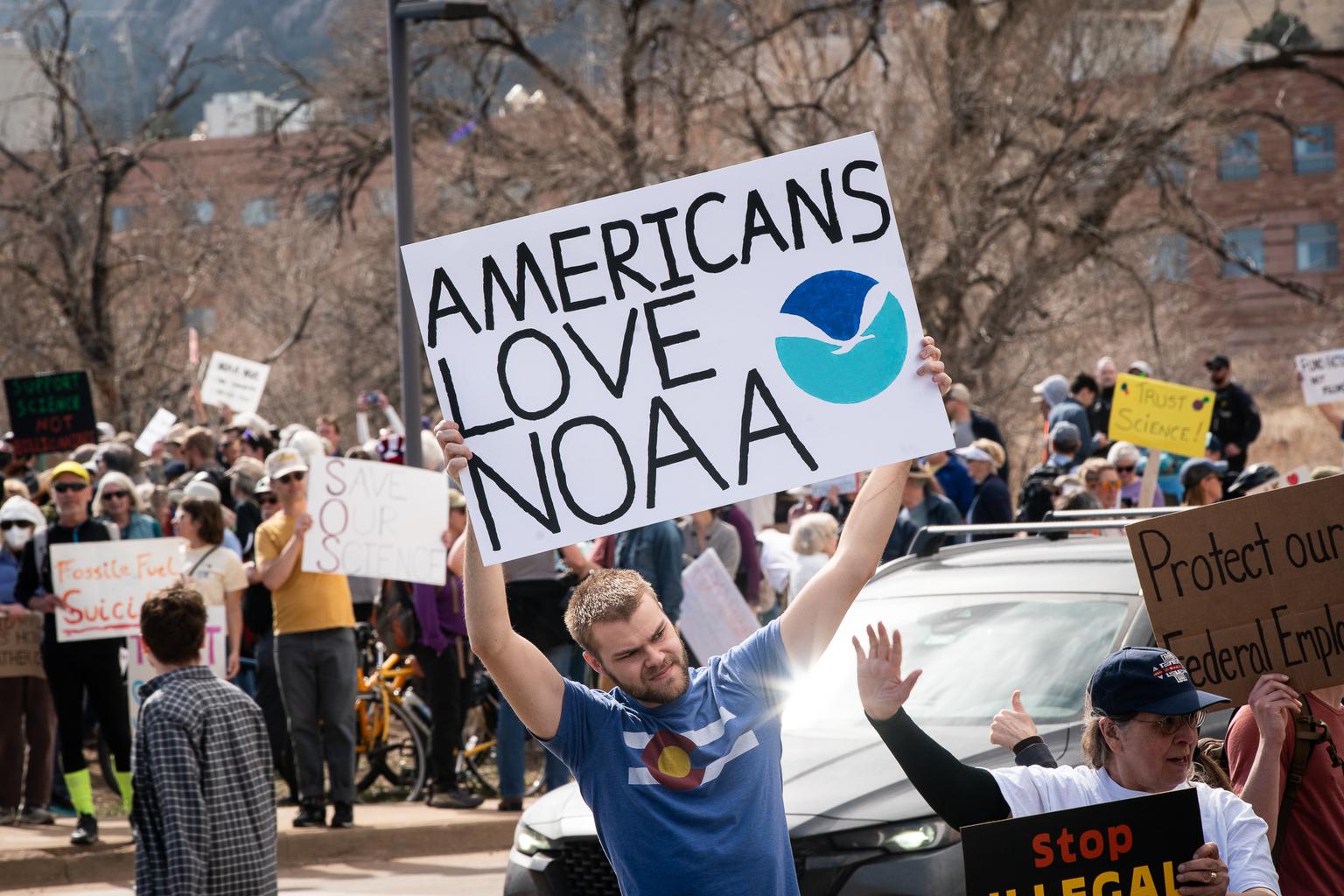
Far and away the largest cuts in President Donald Trump’s proposed $1.15 trillion federal budget are those to the Environmental Protection Agency — 31 percent of the agency’s funding could be on the chopping block. This means the wholesale elimination to some programs like Energy Star and implementation of the Clean Power Plan, while long-standing initiatives like Superfund cleanup would see significant cuts.
The budget also seeks to cut 3,200 workers out of the EPA’s 15,000 employees. That’s one in five workers at the government agency.
One of the most serious reductions asked for by the White House would be to categorical grants that go to states like Colorado. The current proposal would cut categorical grants by more than 40 percent.
“It could be a serious impact to Colorado,” said Carol Campbell, who worked for more than three decades inside the Denver regional EPA office and ended her career as an assistant regional administrator. “Think about the [state’s Taxpayer Bill of Rights] rule. Even if they collected more money, would they be able to use it? Or would it go to general funds which often happens.”
Many have said that Trump’s budget is dead on arrival, and it will change as Congress debates spending rates and line items for agencies. In the meantime, the spending outline does give a window into the thinking and priorities of the Trump administration.
Here are the largest cuts and potential impacts in EPA Region 8, which covers Colorado, Montana, North Dakota, Utah, Wyoming and 27 Tribal Nations:
Climate Change Research And Programs
Under Trump’s plan funding for the Clean Power Plan, international climate change programs, climate change research and partnership programs would be eliminated. That’s a savings of about $100 million.
Region 8 likely won’t see a big impact or loss of jobs. Many of the climate change programs are run out of Washington D.C. But the impact to the state could be felt because it means less work in slowing greenhouse gas emissions.
“With climate change, the stakes are higher,” said Marc Alston a retired EPA Region 8 worker who recently formed the nonprofit Save the EPA in Denver. Alston worked during the Reagan administration when dramatic cuts occurred.
Colorado is already seen the effects of climate change. Statewide average temperatures are two degrees warmer compared to 30 years ago. Snowmelt is happening earlier across Colorado and the West.
Energy efficiency programs, one key to reducing greenhouse gas emissions, would also take a hit under proposed cuts. Trump has proposed eliminating Energy Star, which rates appliances on energy efficiency.
White House budget would cut EPA funding by 31% and end the agency's research on climate change. https://t.co/IHxCZimV6S pic.twitter.com/cWT7YOROsM
Trump has also proposed axing the Weatherization Assistance Program under the Department of Energy. Colorado gets about $12 million annually for energy audits that make homes more efficient. Trump has proposed axing the program. Another program that will go away is the Low Income Energy Assistance Program. About $40 million helps more than 80,000 households keep the lights on.
Joseph Pereira, Director of Low-Income Energy Services for Colorado, said rural households rely on the programs more compared to urban areas.
“The housing stock in Colorado’s rural areas is less efficient, older and is also subject to more cold days during the year,” he said.
Superfund
It’s long been known that the EPA’s superfund program is not super funded. Trump’s proposed budget cuts would shave $330 million off an already sparse budget.
The big picture for former assistant EPA administrator Carol Campbell is that some sites “will be slowed down to almost nothing” and others “probably won’t even start to be cleaned up.”
Trump’s budget document does acknowledge the slow crawl that happens for many Superfund sites, including the 52 current sites in Region 8. The budget statement says the agency will “look for ways to remove some of the barriers that have delayed the program’s ability to return sites to the community.”
The reality, Campbell said, is that Region 8 hasn’t competed that well with larger, more populated regions for Superfund dollars. Less money means even stiffer competition for the remaining funds.
“Typically Region 8 doesn’t do as well on those kinds of sites because they’re more ecological than they are people,” she said. “If there’s a human health factor, those sites get ranked higher and they get more money.”
That could likely mean even less money for clean-up of thousands of abandoned mines across the West. It also remains to be seen what impact the funding reduction could have on Gold King Mine and the Bonita Peak Mining District, a newly created Superfund site in southwest Colorado.
Superfund cuts may actually face resistance from new EPA Administrator Scott Pruitt. In an address to mayors from across the country, Pruitt indicated that Superfund is a priority.
EPA State Funds
The Colorado Department of Public Health and the Environment currently receives about one-third of its budget from the EPA, or about $28 million to support environmental programs. In some states that number approaches 50 percent.
With the president’s budget asking for a 44 percent cut to state grant programs, Colorado could see a big hit.
“In many cases, the Trump administration is simply sending the bill for these vital programs to cash-strapped state and local governments or even businesses themselves – who in turn would have to pass the costs onto taxpayers to keep these programs running,” said American Federation of Government Employees union national president J. David Cox Sr. in a statement.
Dr. Larry Wolk, the executive director of Colorado's department of public health, notes that the budget outline is just a proposal, not the final budget. Wolk's statement continues on to say that the department is "concerned about the proposed cuts we are seeing. Like all states, Colorado relies on federal funds to support our work to protect public health and the environment."
The big fear is that reducing funding could lead to a race to the bottom, where states compete for industries and companies by loosening regulations. Since Colorado is a purple state with Democratic Gov. John Hickenlooper at the helm, that likely won’t happen. But Former Denver EPA worker and former national president of AFGE Council 238 Karen Kellen said Colorado should worry about neighboring states like Wyoming and New Mexico loosening rules.
“Water and air doesn’t stop at state lines,” she said. “It’s like giving a license to pollute.”









